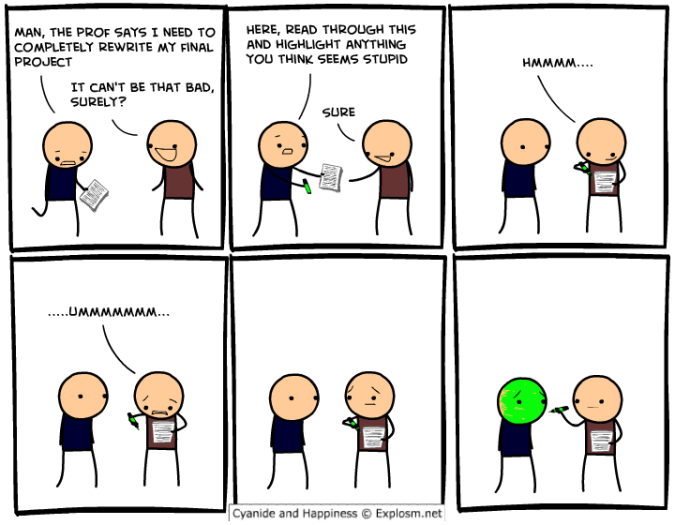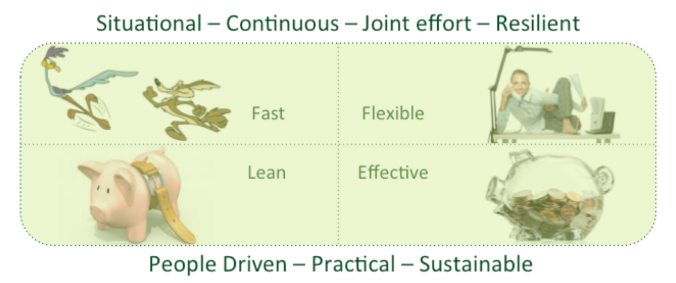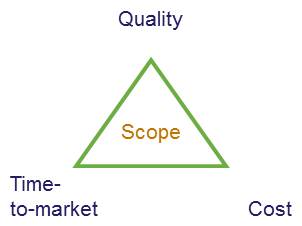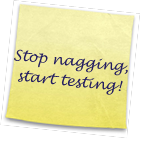For me personally, one of the most difficult things in life is choosing. Especially because I don’t know what would have happened if I had chosen differently… And in the back of my mind, that “what if” game is constantly played.
 So my expert advice in test improvement is to choose wisely and consider several (all?) options. Don’t make choosing an everlasting process, just make sure you choose what helps. To be able to choose, knowledge about and experience with several approaches and models is necessary. Try to find a way that enables you to compare them and find the combination that suits the context and the purpose.
So my expert advice in test improvement is to choose wisely and consider several (all?) options. Don’t make choosing an everlasting process, just make sure you choose what helps. To be able to choose, knowledge about and experience with several approaches and models is necessary. Try to find a way that enables you to compare them and find the combination that suits the context and the purpose.
What usually helps is looking at aspects like:
- Testing only?
Is the scope of the model testing-only or does it consider a broader area? - Training?
Is training available to ensure that everyone involved has the opportunity to learn about it. - Staged or continuous?
Is the model prescribing a standard sequence of improvements in (big) steps or does it give free choice in the sequence of improvements in (small) steps. - SPI related?
Is the approach or model linked to a Software (Process) Improvement model or approach that is already used within the organization or linked to a SPI approach that would help to improve more than just testing. - Scalability?
Can you apply it to help a single project? A team? A department? A complete organization? - Are improvement suggestions “included”?
Some models and approaches focus on finding the current status of testing and the required status; several include concrete improvement actions and highlight enablers - Required budget / investment?
How much time/effort is required for preparation, execution and implementation of the implementation. What is the claim on the organization? Especially since you take into account that Business as Usual will always need to continu. And that the required budget needs to be available; in other words, your approach has to be fit for budget as well. - Top down? Bottom up? A mix?
- Alignment with current test and development approaches, e.g. waterfall, iterative, incremental, Agile, Scrum, DevOps.
- Culture
Align your improvement approach with the culture of the organization and its peopke; although this is not typically something that is defined in a SMART way, this is key to success. - People
Do the people in the organization like the improvement approach and are they willing to change in line with it. Again not typically something that can be defined in a SMART manner…
When I choose based on these – or similar – aspects, I tend to organize a walkthrough of my approach with experienced fellow testers. For me, it softens the “what if” voice in the back of my head.
The models and approaches to choose from are plentiful, probably worth (yet) another blog post.









 Performing an assessment in house is a less expensive initiative than hiring outside consultants. Maybe not as inexpensive as the Low Budget approach I described in my previous post, but still. And it has other substantial benefits. An in-house assessment team knows the organization, its people, its processes, and its habits in substantially more detail than an “outsider” could learn during the relatively short assessment period. And the process improvement suggestions might be more realistic, better tuned to the situation, and more achievable.
Performing an assessment in house is a less expensive initiative than hiring outside consultants. Maybe not as inexpensive as the Low Budget approach I described in my previous post, but still. And it has other substantial benefits. An in-house assessment team knows the organization, its people, its processes, and its habits in substantially more detail than an “outsider” could learn during the relatively short assessment period. And the process improvement suggestions might be more realistic, better tuned to the situation, and more achievable.

